|
FAQs on Anemone Identification
44
Related Articles: Anemones,
Bubble
Tip Anemones, LTAs, Cnidarians, Coldwater Anemones,
Colored/Dyed Anemones,
Related FAQs:
Anemone ID 1,
Anemone ID 2,
Anemone ID 3,
Anemone ID 4,
Anemone ID 5,
Anemone ID 6,
Anemone ID 7,
Anemone ID 8,
Anemone ID 9,
Anemone ID 10,
Anemone ID 11,
Anemone ID 12, Anemone ID 13, Anemone ID 14, Anemone ID 15,
Anemone ID 16,
Anemone ID 17,
Anemone ID 18, Anemone ID 19,
Anemone ID 20,
Anemone ID 21, Anemone ID 22, Anemone ID 23, Anemone ID 24, Anemone ID 25, Anemone ID 26, Anemone ID 27, Anemone ID 28, Anemone ID 29, Anemone
ID 30, Anemone ID 31,
Anemone ID 32,
Anemone ID 33,
Anemone ID 34,
Anemone ID 35,
Anemone ID 36,
Anemone ID 37, Anemone ID 38, Anemone ID 39, Anemone ID 40,
Anemone ID 41,
Anemone ID 42,
Anemone ID 43,
Anemone ID 45,
Cnidarian Identification,
|
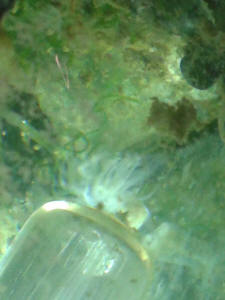
|
 |
New Print and
eBook on Amazon:
Anemone Success
Doing what it takes to keep Anemones healthy long-term
by Robert (Bob) Fenner
|
|
Help with an ID - Actinaria 4/26/18
Hello everyone! I've looked through the site many times over the last few years,
and am very thankful for the advice and information that you've provided here.
<Ok>
I'm hoping you can help me ID an Actinaria. I purchased a frag from my LFS with
2 of these 'polyps' along with a couple Zoas/palys. For the first 1.5-2 years,
they stayed in the same place. Over the last year, I've gone from having 2 to
having 4 - no problem to me, and obviously not a pest that's going to take over
my tank at this rate. The 2 new ones have moved off the frag and around the
tank, so they are obviously not Palys as I was originally told. Each one is no
larger than the size of a quarter. I think they are some type of Anemonia,
<May be>
but am hoping you can give me more info!
Thanks so much!
Lisa
<This looks like... Anthopleura xanthogrammica, a cool/cold water animal.
Bob Fenner>
|
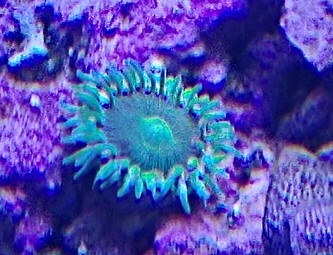 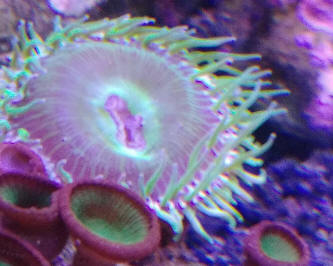 |
|
Re: Help with an ID - Actinaria 4/26/18
Thanks for the help! Do you know if they normally grow and reproduce very
slowly?
<Mmm; yes... I studied (the histology) of a congener (A. elegantissima) many
years ago in college. IF it's this anemone, it might well reproduce asexually at
a slow rate under tropical conditions>
If it's a cool/cold water animal and in a typical reef aquarium, might the
higher temps keep the growth slow?
<Ah yes>
After being in the tank for 3 years, they original 2 are still only
about 1" diameter :)
<Could be. BobF>
|
|
Help with an anemone. ID, BTA or Anemonia?
6/19/15
Hello. I left my LFS today after purchasing an anemone they assured me was NOT a
Majano after I told them I was concerned that it looked a bit like a Majano. He
convinced me that it was a bubble tip,
<Might well be; though very small presently>
I brought it home, but before I stick it in my DT tank, I wanted to research it
myself and try to identify it. I have had no luck. There is only one anemone in
all of Google images right now which resembles mine and I found it on your
website. It is this:
The person questioned what it was and the answer was not definitive here either.
My question is, if you ever heard back from this person confirming bta or
Majano? It is listed on your anemone identifying question page on this website.
Here is my anemone:
As you can see, the distinguishing patterns on the face are identical and both
have the bubble tips. Neither have the identifying five or six white lines
around the mouth that are common with bubble tip anemones and they don't quite
match any of the Majanos I have seen either except for the fewer tentacles and
more visible open face. They are very confusing. Are they perhaps a different
species than either? Any help you can give would be just brilliant. Thanks so
much!
Trisha
<I urge patience here. In time it will be obvious what this is; in the
meanwhile, enjoy it. Bob Fenner>
|
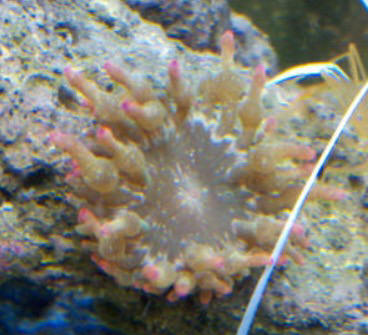
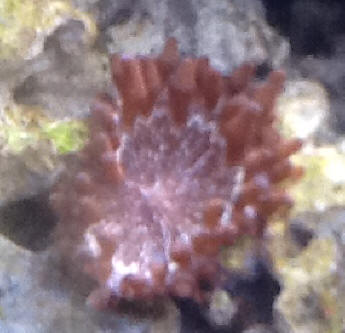 |
|
Re: Help with an anemone; ID 7/7/15
My anemone has been confirmed a bubble tip, although the professional I spoke to
guessed it is possibly a very similar and related breed instead. I figured I'd
let you know in case anyone else has a similar question.
<Thank you, BobF>
|
|
Anemone Identification please!
4/27/15
Hi!
<.... 10 megs of pix... where did I find your email? In the auto-delete file>
I have two anemones that have been present in my 75 gallon tank for some time.
It was established late last summer, so it is a little under a year old. I was
wondering if you could successfully ID both of these anemones.
The first anemone is small and about the size of a nickel, with clear tentacles
that each have a single small fluorescent green spot, ending in a small bulb
tip, plus a brown stalk. This guy came in on live rock and survived the entire
nitrification cycle of the tank. I'm thinking that it is a
Pseudocorynactis but was wondering if you agree?
<I do>
The second anemone is one that I have been unable to properly identify. It is
about the size of a quarter with a tannish red disk and long bright green
tentacles. It will eat some plankton or pieces of shrimp but seems primarily to
be photosynthetic (makes sense given how vivid the green is).
We had it for about three months before a second one appeared. Over the past 4
and a half months they have continued to reproduce (With a count today of 11 in
total, with 2 new ones appearing each month). They're on an isolated rock and
have stayed on it so far. I'm prepared to take measures to reduce the population
but I've been very curious what this anemone is as it doesn't strike me as very
visually similar to tulip, majano,
<This>
or an Aiptasia, plus the reproductive rate seems far too slow and geometric for
it to be a pest anemone. I've attached three photos, one with the original
anemone, then when there were three, and finally how they currently are. Do you
have any advice as to how I can keep this anemone successfully (without
it overpopulating)?
<Yes; isolate it/them on their own rock bommie>
I've been debating as to asking my local fish store if they'd be interested in
taking a few of them off my hands.
<Oh; good idea>
Thanks!
~ RG
<Welcome. Bob Fenner>
|
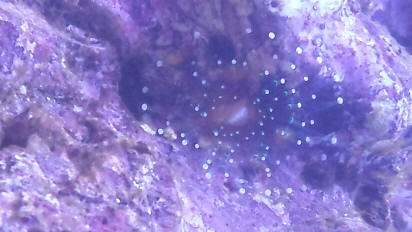
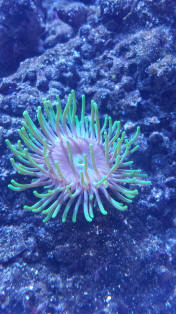
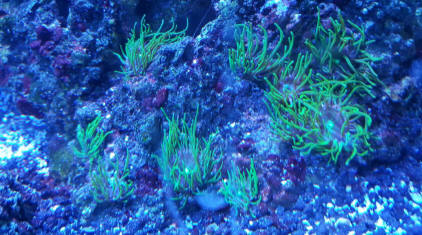 |
|
Anemone identification 3/7/15
Hello, my buddy at the fish store got a rare anemone in that his
wholesaler told him is a Red Vivid Anemone
<Nope>
but I can't find any information or picture on it. I have attached a
picture below, was wondering if by any chance you might know what it is
or how difficult it would be to care for?
Thanks,
Craig
<See WWM re Pseudocorynactis. Bob Fenner> |
 |
|
Green side on bubble tip anemone
12/18/14
Hi,
<Hello Frank>
I have a quick question about a green bubble tip anemone that was sold
to me by the lfs.
<Mmmm>
I never seen one with a green base on the outside. It is a bubble tip or
something else.
<Could be Entacmaea; but my guess would be on Heteractis
magnifica... at any length, this is a poorly specimen from its looks...
is the basal disc torn? I'd be returning it pronto>
Enclosed the pic of the chartreuse side. Thank you.
Frank
<Thank you for sharing. Bob Fenner>
|
 |
|
Anemone ID please
Greetings,
<4.3 megs... uncropped... why?>
I have combed through the anemone ID faq,
<Nah, Anemonia. BobF>
and could not find this little guy. My tank is
about six months old, and I started adding soft corals.
I suspect it is a hitch hiker from one of the new
additions; however it first appeared about a month
ago on a rock which was purchased form someone who
got out of the hobby (for unknown reasons). It seems to reproduce every
week or so and are all a bit smaller than a dime. They
definitely move around, and I would like to keep
them if there will not be any issues.
Any thoughts on what this may be?
Your help is greatly appreciated.
Thanks,
Ian
|
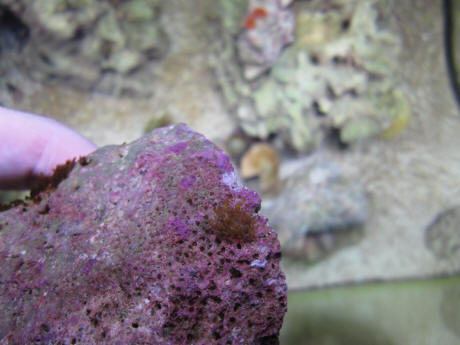
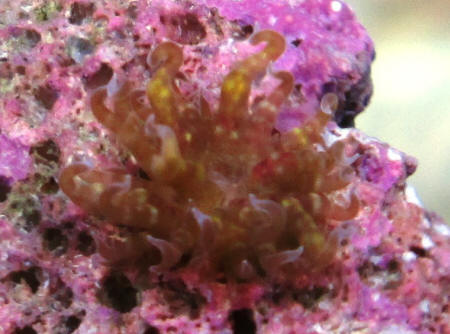 cropped
cropped |
|
Re: Anemone ID please
Sorry, it is uncropped because I only have MS paint on this computer and I
wanted to maintain the picture quality... I really appreciate
the quick response, however Anemonia is the genus, I am
not sure what I am supposed to do with that answer ;)
<... try plugging it into WWM's search tool... on every page>
Majano was my first suspicion, but this is much curlier and I do not see
any green on them....
Re: Anemone ID please
Okay done... (I have been through a good jag of those pages already)
Still nothing which closely resembles this little guy... The
closest thing I have seen which is any where close to similar looks
is the Curlique
Anemone, but mine are much to small...
<Might be... but my guess (not w/ high confidence) is still on A. cf.
majano>
I have spent countless hours over the last month trying to identify this
thing. The rest of the online community literally says to burn
it/them.
I did not get into this hobby to kill what I cannot
identify, hence reaching out to the anemone experts...
If all you can give me with any certainty is a genus,
then I can accept that and continue looking...
Thanks,
Ian
<I'd keep it too. B>
Re: Anemone ID please 10/28/14
Thanks for your insight, I have been thinking about this for a couple days
now. Would it be beneficial in my refugium?
<Mmm; a tough (good) question (as I don't really know the answer). Most
likely yes... the exception being if it becomes too numerous, sheds or gets
chopped up in a pump... broadcast to, through the system. B>
Thanks!
|
|
Anemone ID? 5/27/14
Apologies for the poor pictures, but these two are in my sump and it's hard
to get a decent picture of them as the glass is obviously not clean. Aips or
something else?
<... Nope... read here:
http://wetwebmedia.com/AiptasiaIDF6.htm
and the files linked at top. Bob Fenner>
Thanks
Claire
|
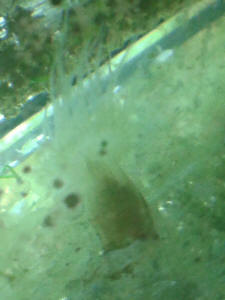
 |
|
Actinarian ID from pix
4/25/14
Hi, talked with Penny @ AquaCorals of Maine today and e-mailed a picture
to identify my anemones and she gave me your web site. Can you guys tell
me what they are ? They don't seem to bother anything in my 220 reef
tank and probably once a year they split. Eventually 1 will disappear
but I end up with 2 at all times. Thanks Gene
<Almost assuredly Entacmaea quadricolor, BTAs. See WWM re. Bob Fenner>
|
 |
|
Mushroom/Anemone ID 1/23/14
Hello WWM Crew,
<Ry>
I am trying to identify the mushroom or anemone in the attached photo.
Can you please help me figure out a common name, possible scientific
name and origin? These animals have a bright neon green mouth with
brownish/purple tentacles and are 3-4 inches each.
<... the size, mouth/s... I do think this is a couple Heteractis aurora;
likely from a bit of tissue "hitch-hiked" on something hard... live rock
perhaps.
Bob Fenner>
Thanks
Ryan
|
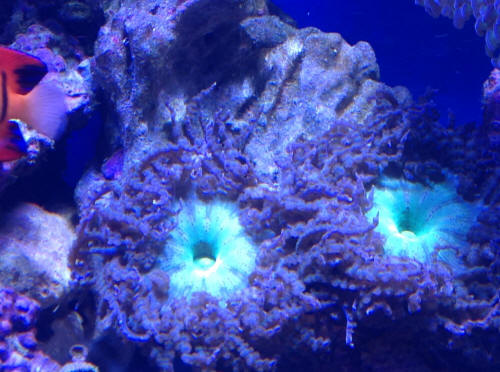 |
|
|

